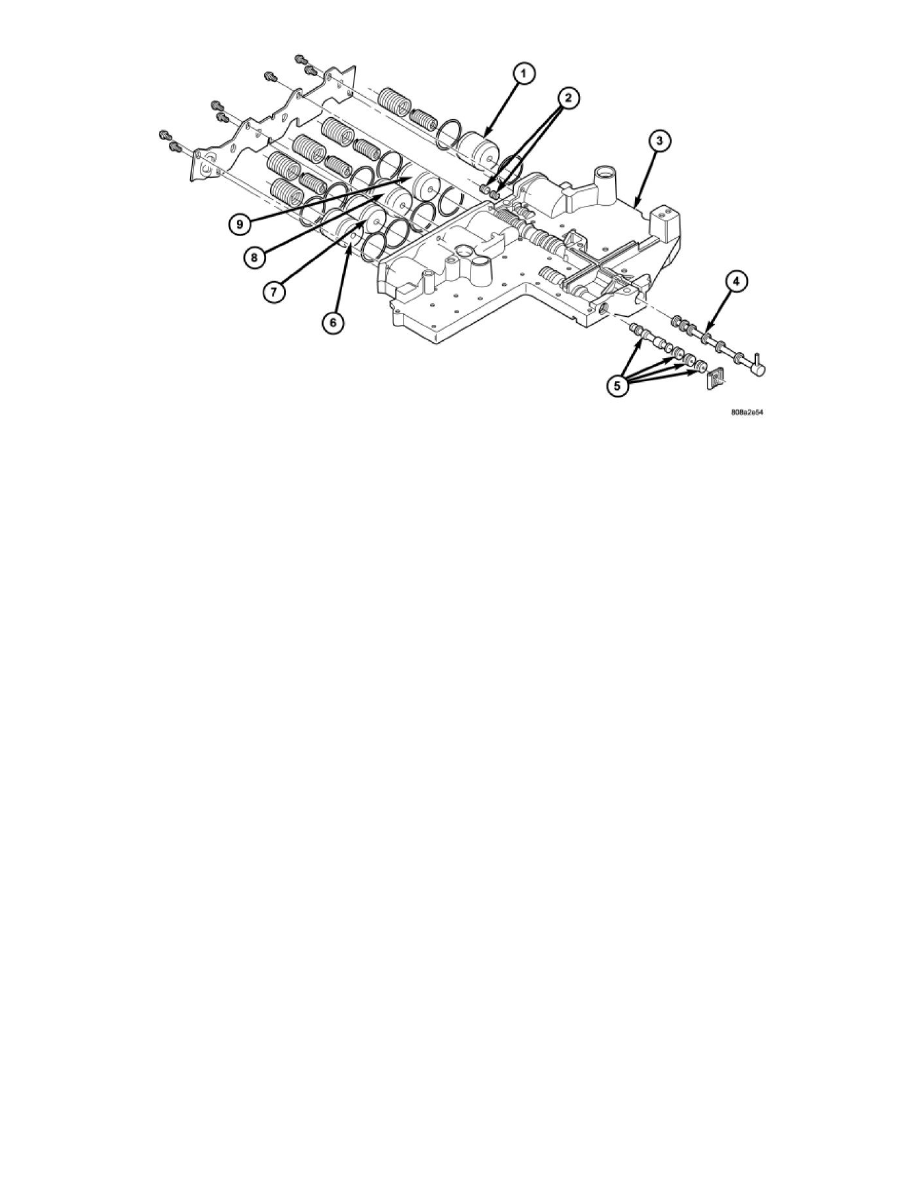RAM 3500 HD Truck 2WD L6-6.7L DSL Turbo (2008)

NOTE: Only the INNER accumulator seal ring actually seals the pressure in the bore. The outer seal ring only serves to guide the piston in the
bore. Gouges which do not extend past the inner seal ring (and have no raised edges, which could damage the guide ring) are acceptable. The
machined accumulator bores often have a tiger-striped appearance. This is NORMAL and does NOT require replacement, as long as the bores
are smooth in the inner seal ring area.
Inspect all of the valve body mating surfaces for scratches, nicks, burrs, or distortion. Use a straightedge to check surface flatness. Minor scratches may
be removed with crocus cloth using only very light pressure.
Minor distortion of a valve body mating surface may be corrected by smoothing the surface with a sheet of crocus cloth. Position the crocus cloth on a
surface plate, sheet of plate glass or equally flat surface. If distortion is severe or any surfaces are heavily scored, the valve body will have to be replaced.
Inspect the valves and plugs for scratches, burrs, nicks, or scores. Minor surface scratches on steel valves and plugs can be removed with crocus cloth but
do not round off the edges of the valve or plug lands. Maintaining sharpness of these edges is vitally important. The edges prevent foreign matter
from lodging between the valves and plugs and the bore.
Inspect all the valve and plug bores in the valve body. Use a penlight to view the bore interiors. Replace the valve body if any bores are distorted or
scored. Inspect all of the valve body springs. The springs must be free of distortion, warpage or broken coils.
Trial fit each valve and plug in its bore to check freedom of operation. When clean and dry, the valves and plugs should drop freely into the bores.
Valve body bores do not normally change dimensionally with use. If the valve body functioned correctly when new, it should continue to operate
properly after cleaning and inspection. It should not be necessary to replace a valve body assembly unless it is damaged in handling.
Inspect all the accumulator bores in the valve body as well as the accumulator piston seal rings, and replace if cut or damaged. Use a penlight to view the
bore interiors. Replace the valve body if any bores are distorted or scored. Inspect all of the accumulator springs. The springs must be free of distortion,
warpage or broken coils.
